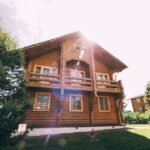Did you know that scientists have already identified 100,000 mold species worldwide? Many are beneficial, breaking down organic materials that then nourish the earth. Unfortunately, though, about 80 species can harm humans.
What’s even more concerning is that molds are everywhere, including indoors. However, they’re more pervasive in homes with water damage.
That doesn’t mean water damage is the same as mold growth, though. While both are huge problems, one usually arises from the other. For that reason, it’s vital to know what sets the two apart.
To that end, we created this water damage vs. mold guide. Keep reading as it can help you learn how to distinguish the two. Please note that if you identify significant mold, it is best to call professionals like Protegrity Restoration immediately. This is because mold in your home can cause serious health issues for you and your family.
What Exactly Is Water Damage?
Water damage is property destruction or loss caused by water intrusion. That includes home plumbing leaks, which waste at least one trillion gallons of water in the US each year. It can also arise from roof leaks or inclement weather, such as flooding.
In any case, water can be damaging as it can trigger processes like the rotting of wood or rusting of metal. It can also cause wood to swell, materials to de-laminate, or surfaces to attract bacteria. At the very least, it can mar surfaces, causing ugly markings or stains.
What About Mold Growths?
Previous research found that 47% of US homes have had mold or dampness problems. A separate study revealed that 45% of US homes had had water damage issues.
Those findings show that water damage can give rise to mold growth. Indeed, mold development is one of the primary indications that you have water damage.
Molds, after all, require moisture to survive, grow, and multiply. They reproduce by releasing tiny spores into the air. You can think of those spores as invisible seeds that float until they come into contact with a surface.
Mold spores that land on a damp surface can grow in just a day or two. That’s why experts recommend cleaning and drying wet materials within 24 to 48 hours.
Water Damage vs. Mold Growth Symptoms
Water damage and mold growth can come with visible, tangible, and olfactory signs. However, not all cases are easy to detect, especially if the source is a hidden leaking plumbing pipe.
If you have water damage or molds at home, though, you’re likely to notice the following symptoms.
Visible Cues
Many people confuse water damage stains with mold growths. They can sometimes look alike, but water stains are surface discoloration. Water spots can also form due to accumulated mineral deposits.
Water damage stains usually appear as a darker area of the affected surface. They also look like rings, especially if they form on ceilings. By contrast, molds can come in many colors: black, blue, gray, green, purple, white, or yellow.
Tangible Symptoms
Both new water stains and mold patches may feel damp to the touch. However, water stains often don’t spread by simply touching them. On the other hand, molds feel soft and slimy and can be easy to smear.
Olfactory Hints
Water damage doesn’t always come with odors, but that still depends on the source. For example, it can make your home stink if the leak comes from a drainpipe. In that case, it may carry foul sewer-like smells that may also cause health risks.
On the other hand, molds almost always emit stale and musty odors. These smells come from compounds called microbial volatile organic compounds (mVOCs). Studies have linked mVOCs to symptoms such as headaches, dizziness, nausea, and fatigue.
Property Destruction
Water damage can cause wallpaper and paint to peel or bubble. That occurs due to the moisture breaking down the materials’ adhesive.
Molds can do the same, except that they can also cause wallpaper to crumble. That’s because these microorganisms feed on organic materials, such as cellulose fibers. So, over time, mold-damaged wallpapers can disintegrate if you touch them.
Water damage can also lead to structural changes in wooden materials. For example, it can cause warping, sponginess, or sogginess on wooden floors. Squeaking floors or panels usually accompany these symptoms.
As for molds, they can infest wood and gradually eat away at its cellulose content. That can then lead to the material becoming hollow or even falling apart.
What to Do if You Have Water or Mold Damage
If you spot the signs above, the first thing to do is confirm the moisture source. For example, you can have a licensed plumber conduct a water leak test at home. That way, the professional can find and fix potential plumbing leaks.
If you also have a mold problem, you can address it yourself, so long as it only affects an area smaller than 10 feet. Be sure to wear proper personal protective gear, including a face mask, goggles, and gloves. Doing so can help you avoid unnecessary accidents with cleaning solutions.
You can scrub mold off hard, non-porous surfaces with detergent and water. You can also use diluted bleach to eradicate the microorganisms.
The most important thing is to ensure you dry everything thoroughly after that. Otherwise, the damp surfaces will attract mold spores, triggering new growths.
If the mold-infested area exceeds 10 feet, it may be best to invest in mold remediation services ASAP. That way, the mold damage repair pros can inspect your entire home to look for other affected places. From there, they will remove the mold and employ measures to reduce the odds of future mold growth.
Address Both Water Damage and Mold Growths ASAP
There you have it, the essential facts you need to know about water damage vs. mold. Now you know that water damage is usually a precursor to mold growth.
So, the next time you have a water leak or intrusion, fix the water source and dry your home ASAP. That way, you can prevent water and mold damage.
Are you interested in other informative guides like this? Please feel free to browse and read our other educational posts, then!




